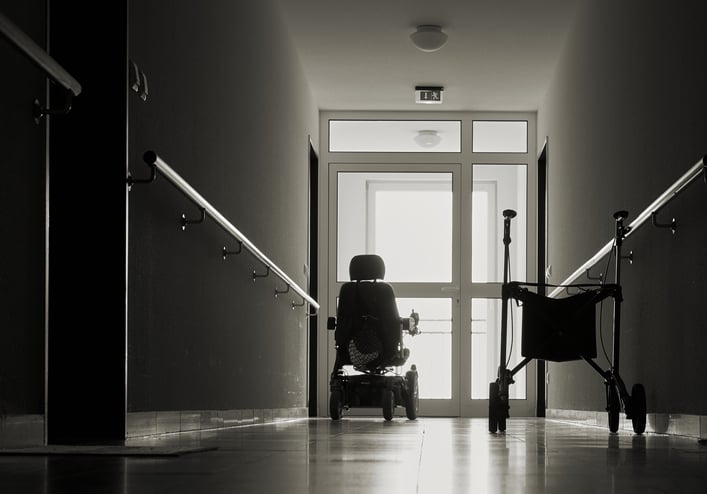
Sooner or later, every nursing home will face a major emergency. Nursing home emergencies exist along a continuum. Issues such as choking may affect only a single patient, whereas outbreaks of the flu and other infectious diseases, such as COVID-19, can endanger the lives of every resident. In 2017, natural disasters affected more than three million people, and nursing home residents are not exempt from these statistics. Any of these incidents can lead to additional health issues, such as infectious outbreaks and chronic respiratory issues, so it is important to implement a comprehensive emergency preparedness plan.
Identify the Biggest Risks
Disaster preparedness begins with identifying the specific risks your residents face. Some questions that can help with this process include:
- What are the most common health emergencies the population we serve faces?
- What previous emergencies have we faced?
- What would we do if our food supplier had an outbreak of E. coli or salmonella?
- Do we have a plan for dealing with water contamination or shortages?
- What natural disasters are most common in this region?
- What would happen if we lost power or internet access?
- Do we live near a large body of water?
- Do we serve patients with special needs, such as those who cannot speak or who have dementia?
Know Each Resident’s Medical Risks
Next, you need to identify the specific medical risks each patient faces. Put this into an easily accessible format, such as a single emergency file. Some common risks to flag include:
- Dysphagia and other swallowing issues that increase the risk of choking
- Severe allergies
- Osteoporosis or a history of falls
- Dementia and psychiatric conditions
- Infectious disease status, especially if a patient has HIV/AIDS, tuberculosis, or another contagious illness
- Mobility impairments
Prepare to Evacuate Residents
Some emergencies may require a full or partial evacuation, especially if you have no power, your building floods, or the water or food is contaminated. Evacuating frightened residents with dementia, mobility impairments, or infectious diseases can be extremely difficult. Trying to plan such an evacuation in the moment can increase casualties and lead to costly mistakes. Devise a comprehensive evacuation plan ahead of time. In many cases, your evacuation plan may include investing in new equipment, such as portable beds or stretchers.
Design a Communication Plan
In an emergency, communication is often the first thing to go. Panicked workers may react poorly or not know who to call. Develop a simple communication plan that offers alternative channels of communication if the internet or phone system goes down. Your communication plan should also include advanced coordination with local agencies. Ensure the police, fire department, and local EMS providers know where your nursing home is located. Write the plan in clear, specific, chronological language, then post it where everyone can see it.
You will also need a plan for getting in touch with residents’ caregivers and families. Ensure you have at least two emergency contacts on file for each resident. Update these contacts at least twice yearly, and ensure this list is in an accessible format that does not depend on power or internet access.
Prepare Your Emergency Equipment
Nursing homes need a wide range of emergency equipment. Your emergency toolkit begins with a supply kit for each resident that includes their emergency contact information, details about their health needs, and a supply of any medication they need.
Your emergency equipment should include everything you need to respond to everyday emergencies, such as choking and anaphylactic shock. State and local regulations for who can administer various emergency interventions vary, so check local rules. In general, you’ll need:
- A basic first aid kit with cleaning supplies, a tourniquet, bandages, and tweezers
- Warming blankets
- Ice packs
- An EpiPen
Some nursing homes invest in generators. This is especially important if you serve patients on ventilators.
A portable emergency suction machine is a versatile equipment that allows you to respond to aspirating or choking residents as well as those facing respiratory emergencies because of chronic or acute illnesses. For help selecting the right machine for your nursing home, download our free guide, The Ultimate Guide to Purchasing a Portable Emergency Suction Device.
Editor's Note: This blog was originally published in October, 2020. It has been re-published with additional up to date content.
















